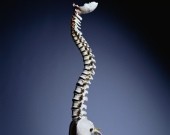AAD Issues 2nd Set of Choosing Wisely Recommendations
American Academy of Dermatology identifies five tests, treatments that are not always necessary
Smoking Cessation Boosts Mental Health, QOL After Heart Attack
Patients who stopped smoking also reported less angina
RSV Detected on Parents’ Clothing in NICU
Although detection rate is low
CDC: Rates of Childhood Obesity Higher in U.S. Than Canada
Rates differ dramatically for children aged 7 to 12
Alterations in Topological Architecture of Brain in PTSD
Decreased path length and increased clustering coefficient, global efficiency, and local efficiency
Misdiagnosis of T2DM Reported in Patient With Hb Wayne
Consistently elevated HbA1c seen with HPLC testing, but not with immunoassay
Lower RASDS Complications for Higher Hospital, Surgeon Volume
Lower rates of preoperative complications seen in revision adult spinal deformity surgery
Worse Outcomes for Children With Delay in Epinephrine
Findings among cohort of children with in-hospital cardiac arrest with initial nonshockable rhythm
Genomic Approach Could Aid Risk Stratification in Adults With AML
Persistent leukemia-linked mutations in remission samples tied to increased relapse, worse survival
Anorexia Resurgence Can Occur After Smoking Cessation
Case report describes two patients who started to display food restriction following weight gain














